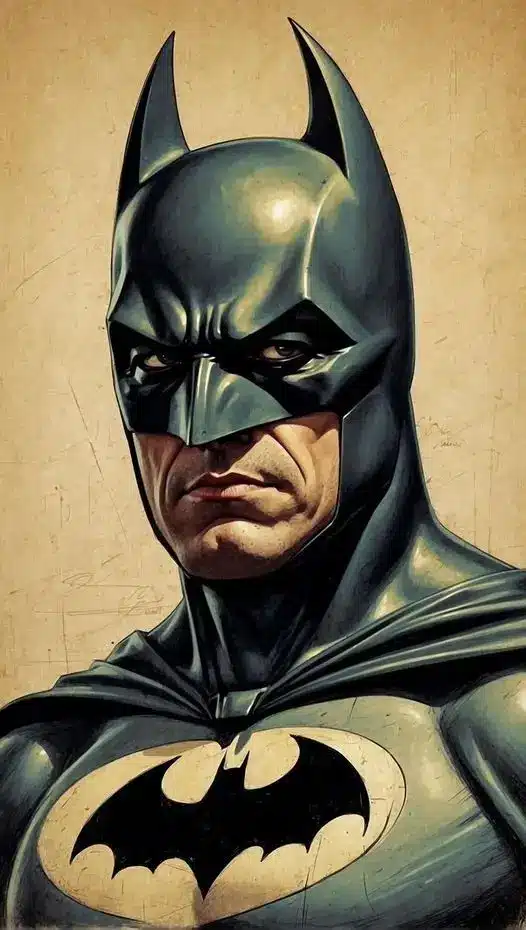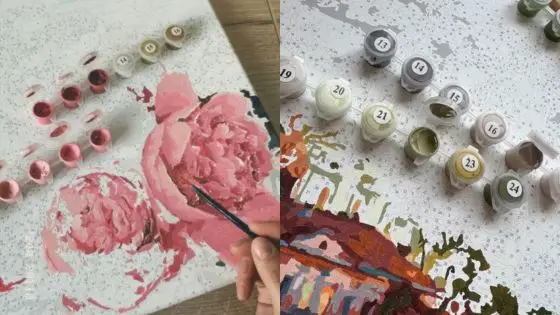Drawing superheroes lets anyone bring their favorite masked crusaders to life on paper. From Batman’s iconic cape to Spider-Man’s web-slinging poses, these characters inspire creativity and imagination in artists of all skill levels.

Learning to draw superheroes starts with mastering basic human anatomy, dynamic poses, and costume design – skills that form the foundation for creating compelling comic book characters. The ability to capture movement and expression helps artists tell powerful visual stories through their superhero artwork.
Comic book legends like Jack Kirby and Steve Ditko developed distinctive styles that shaped how we visualize superheroes today. Their techniques for drawing muscular figures, dramatic action scenes, and eye-catching costumes continue to influence modern artists who want to craft their own crime-fighting characters.
Understanding Superhero Anatomy

Drawing superheroes requires mastering the exaggerated yet believable human form, from perfectly proportioned muscles to action-packed poses that capture their incredible abilities.
Proportion and Musculature
Superhero bodies typically follow an 8-head height ratio, making them slightly taller than average humans who measure 7.5 heads tall. Heroes like Batman, catwoman costume and Wonder Woman showcase well-defined muscles while maintaining realistic human proportions.


The Hulk breaks these rules intentionally, with his massive frame often spanning 9-10 heads tall. His muscles bulge beyond normal human limits, especially in the shoulders, chest, and arms.
When drawing muscles, start with the largest muscle groups first. The chest, back, and thighs form the foundation of the hero’s physique.
Facial features need equal attention. The Hulk’s face shows anger through a pronounced brow and strong jaw, while Venom’s face stretches and contorts in inhuman ways.
Dynamic Poses
Action poses bring superheroes to life. Spider-Man’s signature moves involve twisting poses and web-swinging positions that showcase flexibility.
Think about weight distribution and tension lines. When Batman throws a punch, his entire body contributes to the motion.
Key pose elements:
- Bent knees for stability
- Twisted torso for power
- Extended limbs for action
- Clear line of action through the body
The best poses tell a story. Wonder Woman’s stance should radiate confidence and strength, while the Hulk’s poses emphasize raw power and intimidation.
Essential Superhero Features and Accessories

A superhero’s signature look combines iconic visual elements with practical gear that defines their character and enhances their abilities. These distinctive features make heroes instantly recognizable while serving crucial functions in their crime-fighting missions.
Capes and Costumes
Capes serve both dramatic and practical purposes. They can act as gliding tools, shields, or even weapons in combat situations – think of how Batman uses his cape to strike fear into criminals.


Costumes need to be durable enough for intense battles while allowing maximum mobility. Spandex and leather remain popular choices, with modern heroes like Iron Man incorporating high-tech materials into their suits.
Color choices matter immensely. The Scarlet Witch’s red costume reflects her chaos magic powers, while Superman’s bright blue and red represents hope and inspiration.
Masks and Emblems
Masks protect secret identities and often incorporate useful technology. Iron Man’s mask includes an advanced heads-up display, AI assistance, and various vision modes.


Emblems work as personal brands that inspire hope. Spider-Man’s spider logo instantly tells people who’s swinging by to help, while becoming a symbol citizens trust.
These symbols often reflect the hero’s origin story or powers. The stark simplicity of Batman’s bat emblem makes it memorable and intimidating to criminals.
Weapons and Gadgets
Captain America’s shield stands out as both defensive tool and precise throwing weapon. Its vibranium construction makes it nearly indestructible.
Many heroes rely on utility belts packed with mission-essential gear. Batman carries everything from grappling hooks to smoke pellets.
High-tech heroes like Iron Man integrate weapons directly into their suits. Repulsors serve as both flight stabilizers and ranged weapons.
Simple gadgets often prove most effective. Spider-Man’s web-shooters let him swing through cities and restrain villains with non-lethal force.
Capturing Iconic Superheroes

Drawing iconic superheroes requires attention to their unique physical traits, signature poses, and distinctive costumes that make them instantly recognizable to fans worldwide.
Heroes of Marvel Universe
The Hulk’s massive frame demands exaggerated musculature and intense facial expressions to convey his raw power. Start with basic geometric shapes, emphasizing his oversized shoulders and fists.
Iron Man’s armor needs precise, clean lines with careful attention to the arc reactor and signature red-gold color scheme. Focus on the mechanical details in his joints and faceplate.


Thor’s dynamic cape movement and Mjolnir positioning create powerful action scenes. His armor combines Nordic patterns with modern superhero aesthetics.
Black Panther’s vibranium suit requires subtle texturing to capture its sleek, high-tech appearance. Pay special attention to the mask’s panther-like features and silver accents.
Captain Marvel’s cosmic energy effects add visual flair to her poses. Her suit’s star emblem and sash are key identifying elements.
Legends from DC Comics
Superman’s iconic S-shield and cape demand perfect proportions. His facial features should convey both strength and compassion, with the signature curl in his hair.
Batman’s cape creates dramatic shadows and silhouettes. The utility belt and cowl need precise detailing, while his suit combines armor elements with fabric textures.


Wonder Woman’s costume balances warrior aesthetics with grace. Her lasso, bracers, and tiara require careful attention to their metallic properties.
Draw Catwoman with fluid, athletic poses that emphasize agility. Her costume needs a leather-like texture with subtle reflective highlights.
Mastering the Art of Superhero Drawing

Creating dynamic superhero illustrations requires a blend of fundamental art skills and specialized techniques that bring these powerful characters to life on paper or screen.
Step-by-Step Drawing Guides
Starting with basic shapes helps artists build a solid foundation for superhero characters. A circle for the head and simple geometric forms for the body create the initial framework.
Proportions make superheroes stand out – they typically have broader shoulders, defined muscles, and dramatic poses that convey strength and agility. Spider-Man’s limbs, for example, are usually drawn slightly longer to show his acrobatic nature.


Drawing tutorials often break down complex characters into manageable parts. For a chibi Spider-Man, artists can focus on an oversized head and smaller body while maintaining recognizable costume elements like web patterns.
The Deadpool logo demonstrates how simple shapes can create iconic designs. Start with a circular base and add the character’s signature eyes for an instantly recognizable symbol.
Digital Art Techniques
Digital tools offer artists powerful ways to enhance superhero artwork. Layers help separate line work, colors, and special effects like energy blasts or speed lines.


Brushes designed specifically for comic art can simulate traditional inking techniques. Artists use pressure sensitivity to vary line weights, creating dynamic outlines that emphasize movement and power.
Color plays a crucial role in superhero design. Digital color wheels help artists select bold, complementary colors that make characters pop off the page. Many artists use separate layers for shadows and highlights to add depth.
Custom brushes can create texture effects for different materials – metallic surfaces for Iron Man’s armor or web patterns for Spider-Man’s costume.
Stylizing Your Superheroes

Artists can develop unique interpretations of superheroes by embracing different artistic styles and creative approaches. A distinctive style helps heroes stand out while expressing the artist’s personal vision.
Chibi and Manga Influences
Chibi art transforms superheroes into adorable, miniature versions with exaggerated features. The style typically gives characters large heads, tiny bodies, and simplified facial expressions.
Drawing Chibi Spider-Man means shrinking his proportions to about two or three head-heights tall. His mask eyes become huge and expressive, while his web patterns stay simple and bold.
Manga-inspired superhero designs often feature sharp angles, dramatic poses, and speed lines to convey movement. This style works well for action scenes and emotional moments.
Exaggeration and Stylization
Dynamic poses make superheroes appear more powerful. Artists can stretch limbs slightly beyond normal proportions to emphasize motion and strength.


Costume details benefit from stylization – capes flow more dramatically, muscles appear more defined, and armor looks more intricate. These artistic choices enhance the character’s visual impact.
Bold line weights help distinguish important features. Thick outlines around the figure with thinner internal lines create visual hierarchy and draw attention to key elements.
Simple shapes and clean silhouettes make heroes instantly recognizable. Reducing complex designs to basic geometric forms helps maintain clarity at any size.
- 1.6Kshares
- Facebook0
- Pinterest1.6K
- Twitter1


